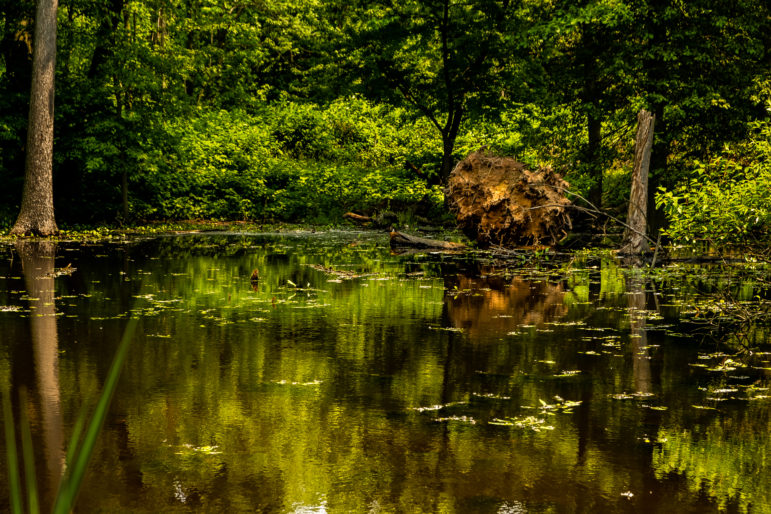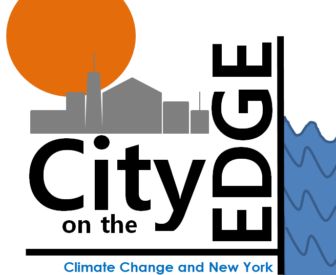
Adi Talwar
A year and a half after it won City Council approval, a Staten Island development project is stalled thanks to an unsuspecting turtle.
During Superstorm Sandy, low-lying areas like Canarsie, Red Hook and Midland Beach were among the worst hit but some neighborhoods escaped with the help of their local wetlands, which serve as a natural defense against storm surges. In the northwest corner of Staten Island some residents have been fighting to preserve their wetland site from an impending development sanctioned by City Council in 2017.
All but one Council member voted in favor of a retail project that would place a BJ’s store, gas station and a parking lot on top of several wetlands in the Mariners Harbor neighborhood.
In a statement she released the day of the vote two years ago, Councilmember Deborah Rose—who represents the area—assured her district that all tidal wetlands would be protected, calling the project a win for the environment. The councilmember said she negotiated with the developers to include a traffic monitoring program, solar panels to minimize the carbon footprint and a public viewing area of the wetlands. She also said the project would manage stormwater volumes that well exceed the impact of Hurricanes Irene and Sandy combined.
But having seen development projects negatively impact her own East New York community, Councilmember Inez Barron could not support the deal. “So I said, ‘No, I’m not going to be a part of a short-sighted economic venture that is removing a natural buffer that would protect people for years to come,'” she recently told City Limits.
She said despite the developer’s promises to construct a stormwater retention basin and replace the 1,700 trees it would chop down, the project would not have combated a storm surge to the same degree that a natural ecosystem would.
A year and a half later, the land remains undeveloped thanks to an unsuspecting turtle.
After the vote, as the New York State Department of Environmental Conservation considered whether to grant a wetlands permit to the project, it asked the developer to study whether or not the endangered Eastern Mud Turtle was present at the site. That means if the developers want the permit, they must conduct a survey indicating its presence, which could only be done this spring when the turtles are most active. If the developers find the rare and notoriously secretive turtle on-site during the survey, they will have to submit a plan to mitigate potential impacts to the turtle as part of their project proposal. DEC can accept that mitigation plan, or ask that it be amended, and grant the permit to build–or it can reject the application.*
But putting developers in charge of something that won’t benefit them creates a conflict, according to Gabriella Velardi-Ward, founder of the Coalition for Wetlands and Forests. A former architect with New York City Parks Department, Velardi-Ward is committed to fighting on behalf of what she calls an environmental justice community.
“DEC has called us loud and we intend to stay loud,” she said, “it was a compliment. We work very hard to be loud.” Velardi-Ward also lives right across from the large triangular patch of land known as the Graniteville Swamp Woods where the proposed retail project would go, and is extremely concerned about the potential loss of a flood barrier.
“It’s like there’s no land left for builders to build on so they’re looking at Staten Island,” she said, “which was once considered the backyard of New York.”
The real estate firm that owns the property, Josif A. LLC, has not returned calls for comment.
In its proposal, the company planned to develop roughly 28 acres of the swamp woods, which included 6.94 acres of protected freshwater or tidal wetlands. Per state and federal regulations, the proposed project would also have to avoid wetland adjacent areas-a 100-foot radius for freshwater or 150 feet for tidal. In total, the developers would be prevented from building on 10.77 acres.
This buffer zone is a critical space for allowing native species to survive. Some of the smallest turtles in North America, eastern mud turtles tend to stay close to their homes, only moving between their hibernation sites and breeding nests for a few months each year. Emerging from their winter homes in the dryer upland areas, the turtles trudge down to the wetlands in springtime.
Somewhere within these soggy pockets of land, the elusive mud turtle might be laying her meager clutch of eggs.
On a warm day in June, Velardi-Ward took it upon herself to search for signs of turtle traps. Accompanied by environmental scientist Ericka Naklicki from T&M Associates, the two set out to confirm whether or not the developer had set any traps. They were looking for something that might resemble a narrow inverted funnel where a turtle would be lured inside by bait and not be able to get back out, a common method used by herpetologists to study the tiny reptiles. But they were unsuccessful in locating any traps set by the property owners that day.
The developers bought the property in 1977 before the DEC enacted the final freshwater wetlands map for Richmond County ten years later. This quickly prompted the owners to challenge the freshwater wetlands designation of their property, which DEC contested. To reach a settlement, the owners delineated the wetland boundaries and in 2012 created a site plan that promised to keep the wetland enhancement area and buffer zone as natural areas.
Then City Council became involved. The owners requested to rezone portions of the city’s Zoning Map in order to build retail spaces in excess of 10,000 square feet per establishment. Councilmember Rose said the owners could have already started developing the project without Council approval but with it the development would also remove unbuilt but mapped streets to prevent development in adjacent wetlands.
It’s not just the impact on turtles that worries some neighbors. Two years ago, Ajamu Brown moved to the neighborhood from central Brooklyn. He met Velardi-Ward when he became increasingly concerned about the air quality in the area. The 42-year-old said his main concern with the BJs project is air pollution because of the estimated loss of so many trees and how that will affect his 5-month-old son.
Get the best of City Limits news in your inbox.
Select any of our free weekly newsletters and stay informed on the latest policy-focused, independent news.
“I understand the development is happening on private land but there’s a public cost […] that will occur there,” he said, “so that needs to be considered before greenlighting a project like this.”
In recent months, the South Shore on Staten Island and parts of the Bronx have become subject to potential city planning amendments. The Department of City Planning recently dropped a proposal that would have changed building regulations in Special Natural Areas Districts because of community pushback. According to residents and board members, the proposal would’ve placed restrictions on homeowners and allowed property owners to develop without city approval.
If the owners of the proposed South Avenue retail project find the mud turtle in the Graniteville Swamp Woods, they will submit their findings to DEC, as well as a mitigation plan that will result in a net conservation benefit to the species. But it’s too early to say exactly what kind of mitigation would be necessary—or if it would stop the project altogether. Even if the turtle is found, Graniteville residents may need to find another hero to protect their homes from future flooding.
While the developers must conduct the turtle survey by the end of this month, there’s no deadline to submit their turtle survey results to DEC.
*Clarification: This passage was updated to clarify how the turtle became an issue of concern to DEC and the range of options open to that agency if the turtle is found on site.









